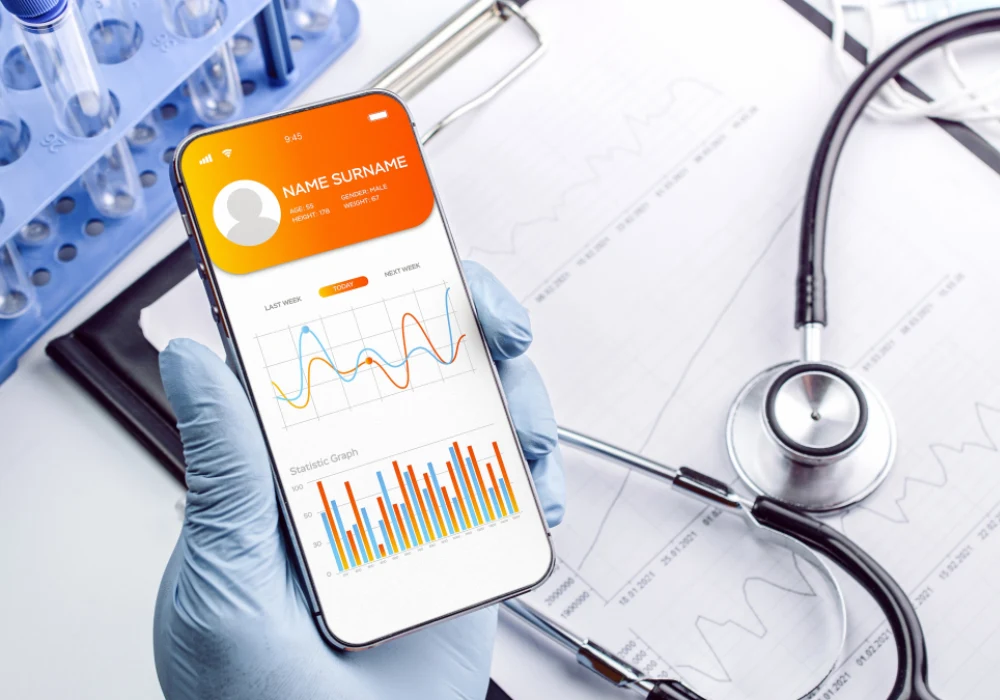Artificial intelligence is rapidly reshaping the first touchpoint in healthcare. Home diagnostics, automated services and app-based triage are bringing assessment and advice to smartphones and wearables, shifting routine access away from in-person encounters. In the United Kingdom, the NHS Doctor in Your Pocket initiative signals a step change by putting symptom checking, chronic condition support and instant guidance in the same digital channel. The aim is faster triage, shorter waits and better informed patients. These gains are compelling, yet they arrive with unresolved questions about accuracy, governance and impact on patient behaviour. As AI tools move from controlled settings into the messy reality of everyday life, their benefits and risks come into sharper focus.
Expanding Access and Earlier Detection
AI-enabled diagnostics already analyse heart rhythms, screen skin lesions from photographs and generate risk signals from lifestyle data. Wearables continuously track vital signs and can inform users about irregularities that need attention. For many, this creates convenient access to clinical insights without repeated GP appointments, supporting earlier intervention and more active self-management. In specialties such as cardiology, imaging that incorporates AI can highlight subtle dysfunction before it becomes clinically obvious, offering opportunities to prevent serious events. In radiology, algorithms that review X-rays and MRIs can draw attention to suspicious findings that might otherwise be overlooked, supporting detection at an earlier stage.
The availability dividends are clearest where geography and workforce shortages restrict care. In rural or underserved areas with limited clinical capacity, a smartphone application that flags atrial fibrillation or screens for diabetic retinopathy can close gaps in basic screening and referral. People who previously faced long travel or delays can obtain immediate feedback that guides timely action. Convenience is its own catalyst: when assessment is available on a wrist or phone, engagement rises, and benign symptoms can be distinguished from issues that warrant escalation. By compressing the distance between noticing a symptom and taking the next step, AI promises a more proactive pathway for everyday health concerns.
The operational appeal for systems is similarly strong. If remote tools resolve straightforward queries and direct non-urgent cases appropriately, pressure on front-line services eases. Digital triage consolidates information early, so when a clinician becomes involved the relevant history, symptom pattern and preliminary analysis are already in place. When used properly, this can shorten consultations, focus investigations and improve throughput without compromising care. The vision is not replacement of clinicians but redeployment of their time toward complexity, conversation and shared decisions.
Misdiagnosis, Oversight and Real-world Limits
Alongside these gains material risks still remain. Model performance depends on the data used for development. When training data are narrow or unrepresentative, predictions can falter once tools meet the diversity of real-world populations and environments. Research has shown that systems that perform strongly in controlled settings can struggle when exposed to the variability of daily use, where lighting, device quality and presentation differ from test conditions. The consequences span both false reassurance and false alarm, each with clinical and psychological costs.
Must Read: Advanced AI Techniques in DCE-MRI for Breast Cancer Diagnosis
False negatives matter when an application downplays chest pain that requires urgent attention or misses a malignant lesion. False positives matter when benign findings are flagged as serious, prompting unnecessary investigations, anxiety and potential harm. Unlike clinicians, algorithms have limited ability to weigh context, such as a history of health anxiety or a pattern of symptoms that commonly points to a non-serious cause. Pattern recognition without narrative understanding can mislead if signals are interpreted in isolation. This gap underscores the importance of human oversight, particularly where decisions carry risk.
Regulation has not fully settled around these realities. Whether AI diagnostic applications should be treated as medical devices with rigorous pre-market testing remains uneven across jurisdictions. Moves toward tighter oversight have begun, yet gaps persist in standardised validation and post-market monitoring. Without clear benchmarks for performance, transparency about limitations and robust update pathways, users and providers can overestimate reliability. The absence of consistent rules also complicates procurement, clinical governance and accountability within health services seeking to deploy such tools at scale.
Ethics, Liability and the Human Factor
Beyond accuracy, ethical and legal dimensions shape adoption. When an AI-generated recommendation contributes to harm, responsibility is diffuse. Developers write code, providers endorse services and users interpret outputs. Clear lines of liability are rare, leaving patients and organisations uncertain about recourse and risk. This uncertainty can slow beneficial innovation or, conversely, permit unsafe deployment if accountability is ill defined. Clarity on where duties lie, and how they are shared, will be central to trust.
Data stewardship is equally pivotal. Many applications ingest sensitive information ranging from heart rate and sleep to genomic predisposition. If mishandled or breached, such data can be exploited by insurers, employers or malicious actors, opening avenues for discrimination. The prospect of premiums adjusted by algorithmic risk or hiring decisions influenced by wellness metrics raises social concerns that extend beyond clinical settings. Robust privacy protections, minimisation of data collection and transparent use policies are essential to mitigate these harms.
Psychological effects deserve careful attention. Easy access to probabilistic outputs can fuel cycles of worry, with users repeatedly checking symptoms and fixating on worst-case interpretations. Unlike a clinician who can contextualise, reassure and redirect, an application may surface percentages without the accompanying conversation that frames risk. Persistent vigilance can undermine wellbeing even when physical health is stable. Designing experiences that prioritise clarity, avoid alarmism and encourage appropriate escalation can temper this tendency.
Looking ahead, a hybrid model is the most plausible path. AI can scan images, sift signals and surface options at speed, while clinicians integrate findings with history, values and preferences. Machines excel at scale and pattern detection. Humans excel at meaning, trade-offs and empathy. The challenge for systems is to orchestrate these strengths so that automation handles routine analysis and administration, and professionals focus on complexity and care relationships. Achieving that balance requires validation, transparency and accountable pathways from development through deployment and update.
AI health diagnostics are now embedded in everyday technology and will continue to advance. They offer earlier detection, broader access and operational relief, yet they also carry risks tied to misdiagnosis, uneven oversight, privacy and anxiety. For healthcare professionals and leaders, the priority is to harness utility without importing avoidable harm. That means selecting tools with demonstrable performance in real-world conditions, defining responsibility across developers and providers, guarding personal data and ensuring human oversight where stakes are high. When aligned with these safeguards, AI becomes a capable assistant that streamlines pathways and directs attention where it is most needed. The most effective care will pair algorithmic speed with human judgement to deliver safer, more responsive services.
Source: HealthIT Answers
Image Credit: iStock










